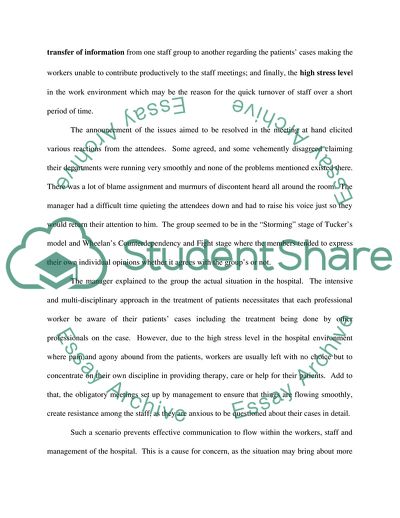Cite this document
(The Prevailing Problems Forwarded by the Hospital Employees Case Study, n.d.)
The Prevailing Problems Forwarded by the Hospital Employees Case Study. Retrieved from https://studentshare.org/health-sciences-medicine/1711322-report-of-group-experience-subject-group-work-and-practice-counselling
The Prevailing Problems Forwarded by the Hospital Employees Case Study. Retrieved from https://studentshare.org/health-sciences-medicine/1711322-report-of-group-experience-subject-group-work-and-practice-counselling
(The Prevailing Problems Forwarded by the Hospital Employees Case Study)
The Prevailing Problems Forwarded by the Hospital Employees Case Study. https://studentshare.org/health-sciences-medicine/1711322-report-of-group-experience-subject-group-work-and-practice-counselling.
The Prevailing Problems Forwarded by the Hospital Employees Case Study. https://studentshare.org/health-sciences-medicine/1711322-report-of-group-experience-subject-group-work-and-practice-counselling.
“The Prevailing Problems Forwarded by the Hospital Employees Case Study”, n.d. https://studentshare.org/health-sciences-medicine/1711322-report-of-group-experience-subject-group-work-and-practice-counselling.


